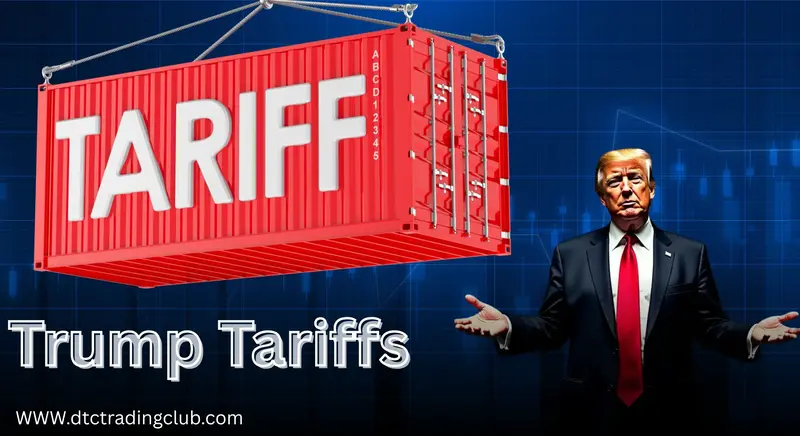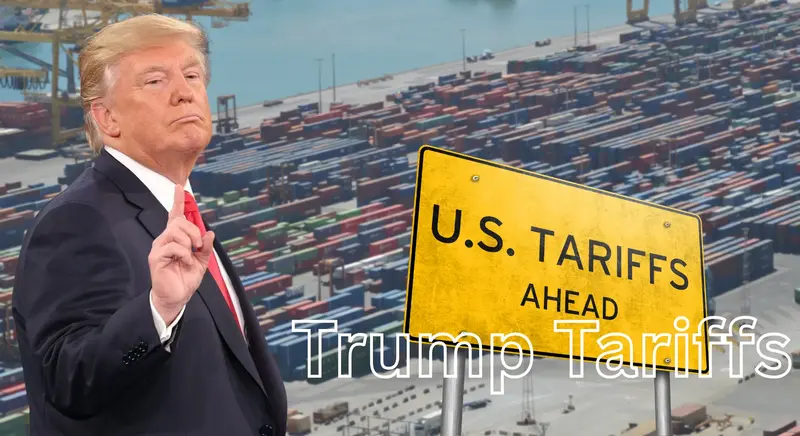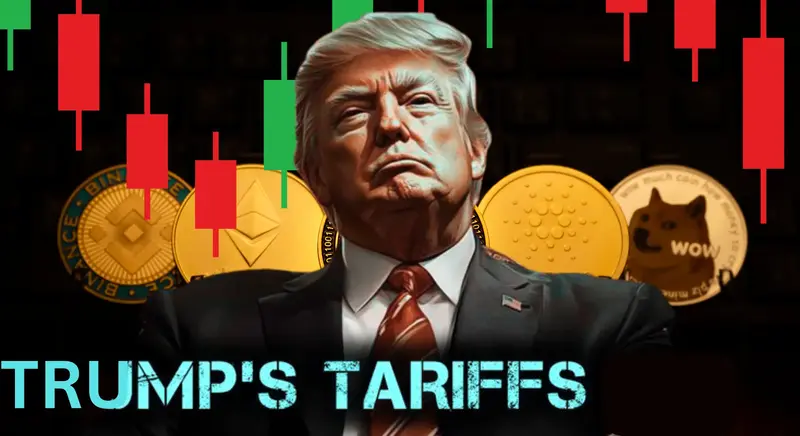Introduction
In 2025, as former President Donald Trump returned to power, the global trade landscape began shifting rapidly. Armed with a new series of executive orders, Trump launched a bold economic agenda centered around American protectionism. His policy? High tariffs, strict trade rules, and an “America First” attitude—louder and stronger than ever.
From businesses in New York to exporters in New Delhi, the effects have been immediate—and in many cases, shocking. In this blog, we’ll break down the 5 most powerful and surprising global impacts of the Trump tariffs, explore the executive orders Trump signed, and examine their effect on trade, inflation, diplomacy, and especially India’s trade deficit with the USA.
So buckle up—this is a fresh, in-depth look at how Trump’s 2025 economic agenda is shaking up the global trade system.
Table of Contents
Executive Power Unleashed: Tariffs on Almost Everything

Within weeks of taking office in January 2025, Trump signed a set of aggressive executive orders targeting America’s trade partners. One of the most talked-about was an order that imposed a 10% blanket tariff on all imports, with higher rates for countries running trade surpluses with the U.S.
This wasn’t just a simple tax. It completely changed the way global trade works. Under the banner of national security and economic independence, the executive orders Trump signed created a new system of “reciprocal tariffs,” which meant if a country charges the U.S. If another country taxed a U.S. product at 20%, America would hit back with the same—or an even higher—rate.
This bold step was part of the “Trump signed executive orders 2025” package that critics say was rushed, while supporters hailed it as long overdue.
Impact:
- Businesses globally had little time to adjust.
- Over 60 countries hit by new duties.
- Many nations were shocked by the lack of negotiations.
American Tariffs Push Global Inflation Higher
The global economy was already fragile in early 2025, and these sudden tariff hikes poured fuel on the fire. Prices began climbing as supply chains tightened. Everyday goods—electronics, clothes, and even groceries—saw cost increases.
American tariffs didn’t just affect China or Mexico—they were imposed on allies too. Countries like Germany, Canada, Japan, and even India found themselves paying heavy duties to access the U.S. market.
Real-World Example:
- A U.S. electronics retailer that once imported LED TVs from South Korea now pays 30% more.
- A Canadian auto parts supplier has cut staff due to declining U.S. sales.
Why it matters:
These price hikes directly affect consumers. From small businesses in Ohio to families in Mumbai, the ripple effects are global. What started as an economic policy is now a kitchen-table issue.
India in the Crossfire: Trade Deficit & Tariff Trouble
What really caught everyone off guard was when Trump slapped a steep 50% tariff on Indian exports to the U.S.
Why India?
1. India has a large trade deficit with the USA, meaning it sells more to America than it buys.
2. India continued buying discounted Russian oil, which the U.S. considers a geopolitical threat.
So, in retaliation, Trump announced an additional 25% tariff on top of existing duties. This directly impacted Indian exporters in sectors like
- Textiles
- Pharmaceuticals
- Gems and Jewelry
- Engineering goods
Indian Trade Bodies Reacted:
- This move is deeply disappointing. Our exporters are now on the edge.
- The Indian government expressed concern but has avoided open retaliation—yet.
Global Supply Chains Disrupted
One of the most underestimated effects of the Trump tariffs has been the shock to global supply chains. When goods cost more to import and export, companies rethink their sourcing strategies.
How it’s playing out:
- U.S. brands are scrambling to find local suppliers or alternative countries with lower duties.
- Countries like Vietnam and Mexico are quickly becoming go-to spots for global manufacturing.
- India, which had been gaining manufacturing ground, is now worried about losing U.S. clients.
Multinational companies have also had to:
- Delay shipments
- Revise product pricing
- Shift production to avoid tariff-heavy zones
This is not just an economic story—it’s a logistics nightmare.
Political and Legal Backlash Rising
As expected, several trade partners have filed complaints at the World Trade Organization. Some U.S. companies have even taken the matter to court, claiming these tariffs were implemented without proper legal grounds.
One notable case came from a wine importer who challenged the blanket 10% tariff. A federal trade court ruled that the administration may have overstepped its authority.
This means:
- More legal battles are coming.
- Courts may block or reverse parts of these executive orders.
- Trump’s strategy, while bold, may not be bulletproof.
The political cost is also growing:
- Allies are angry.
- U.S. farmers and exporters who rely on global markets are feeling the squeeze.
- Trump’s approval rating among business owners is mixed.
India’s Dilemma: What Comes Next?

India now faces a tough choice:
- Retaliate with its own tariffs? Risk further conflict.
- Accept the new terms? Risk economic losses.
India’s trade ministry is reportedly trying to open backdoor negotiations with Washington. The country is also considering increasing trade with the EU and Southeast Asia to reduce dependence on the U.S. market.
But make no mistake: this is a major test for Indian diplomacy and economic resilience.
Conclusion: A Global Reset?
Whether you support or oppose Trump’s strategy, one thing is clear: the 2025 tariff wave is reshaping global trade. With rising prices, angry allies, shifting supply chains, and mounting legal challenges, the world is now entering a new era of economic nationalism.
- For India, the road ahead is uncertain. For businesses globally, it’s a wake-up call.
- Trade is no longer just business—it’s political, personal, and power-driven.
FAQs:
1. What are the Trump tariffs in 2025, and how do they work?
ANSWER: In 2025, Donald Trump returned to the White House and introduced sweeping tariffs through new executive orders. These tariffs include a 10% baseline on most imports and higher “reciprocal tariffs” on countries with large trade surpluses with the U.S. The idea is simple—if a country charges America 20%, the U.S. will do the same or more. The goal is to fix the trade imbalance and bring manufacturing back to the U.S., but it’s also causing price hikes and global tension.
2. Why did Trump put a 50% tariff on Indian goods?
ANSWER: Trump slapped a 50% tariff on Indian goods mainly due to two reasons: India’s trade surplus with the U.S. and its ongoing imports of cheap Russian oil. The U.S. sees India’s energy deals with Russia as a threat to global stability. So, as part of Trump’s tough economic stance, he doubled down with extra tariffs—directly targeting Indian exports like textiles, pharma, and electronics.
3. How are the Trump tariffs affecting global trade and supply chains?
ANSWER: The tariffs have disrupted global supply chains in a big way. Many U.S. companies are now looking beyond traditional partners like China and India. Countries like Vietnam and Mexico are emerging as new manufacturing hubs. However, the sudden shift is creating delays, cost increases, and major headaches for businesses around the world.
4. What is the U.S. trade deficit, and why does it matter to Trump’s policy?
ANSWER: A trade deficit with the U.S. means America is buying more from other countries than it’s selling to them. Trump sees this as a sign that America is being taken advantage of. His executive orders in 2025 aim to shrink this gap by taxing imports and encouraging domestic production. However, critics argue it could backfire by raising costs for American consumers and businesses.
5. Will these tariffs help the American economy or hurt it?
ANSWER: That’s the big debate. Supporters believe American tariffs will boost U.S. jobs and industry by leveling the playing field. But many economists warn they’ll lead to inflation, job cuts in export sectors, and strained international relations. In the short term, prices are already going up, and global trade is under pressure.
6. What industries are most affected by Trump tariffs in 2025?
ANSWER: Industries most affected by the Trump tariffs in 2025 include electronics, automobiles, textiles, and agriculture. Companies that rely heavily on imports—like tech manufacturers and fashion brands—are facing higher costs, supply delays, and shrinking profit margins. Export-heavy sectors in countries like India, China, and Brazil are also feeling the heat due to retaliatory tariffs.
7. How are Trump tariffs different from previous U.S. trade policies?
ANSWER: Unlike past trade policies that focused on negotiation and multilateral agreements, Trump tariffs in 2025 are more aggressive and unilateral. They use direct executive orders to impose high import duties without much warning or diplomacy. The approach is focused on rapid action to reduce the U.S. trade deficit and prioritize American-made products, even if it strains relationships with allies.
Final Thoughts
If you’re a business owner, policy follower, or simply curious about the world economy, stay tuned. The American tariffs imposed this year will likely have effects for years to come. And with more executive orders expected soon, we’re just getting started.
